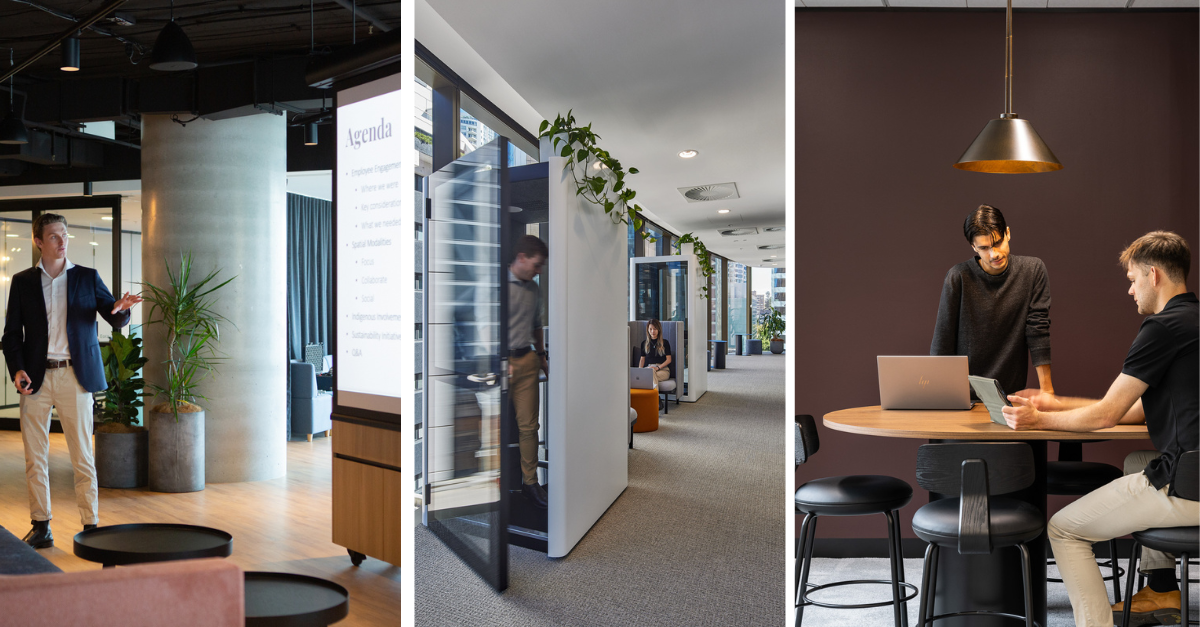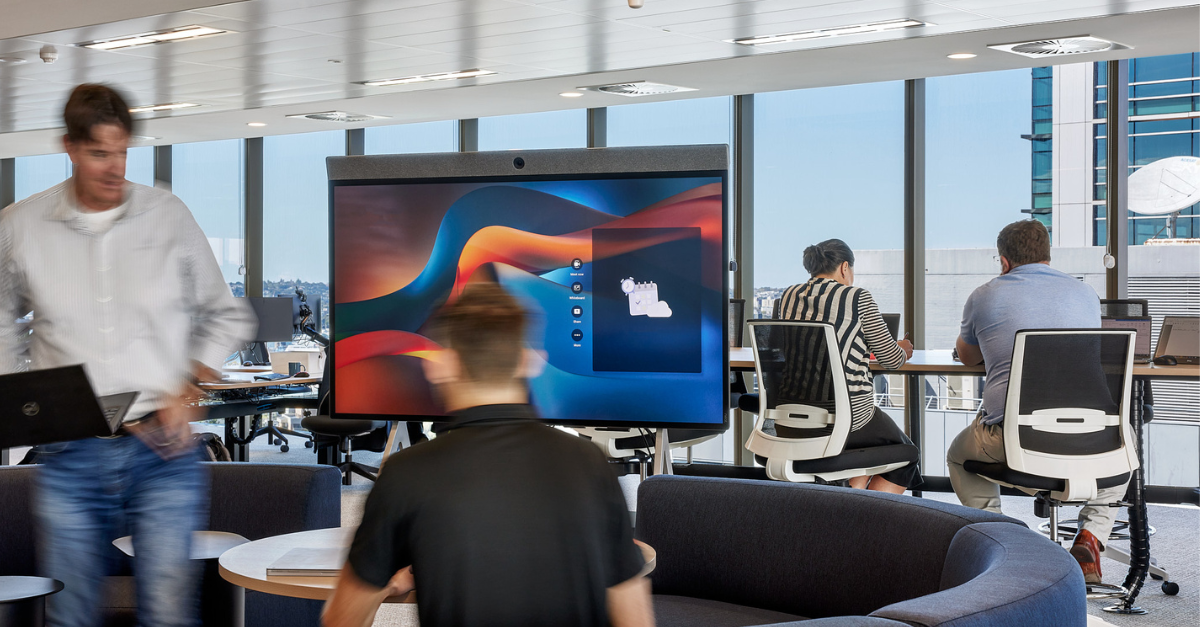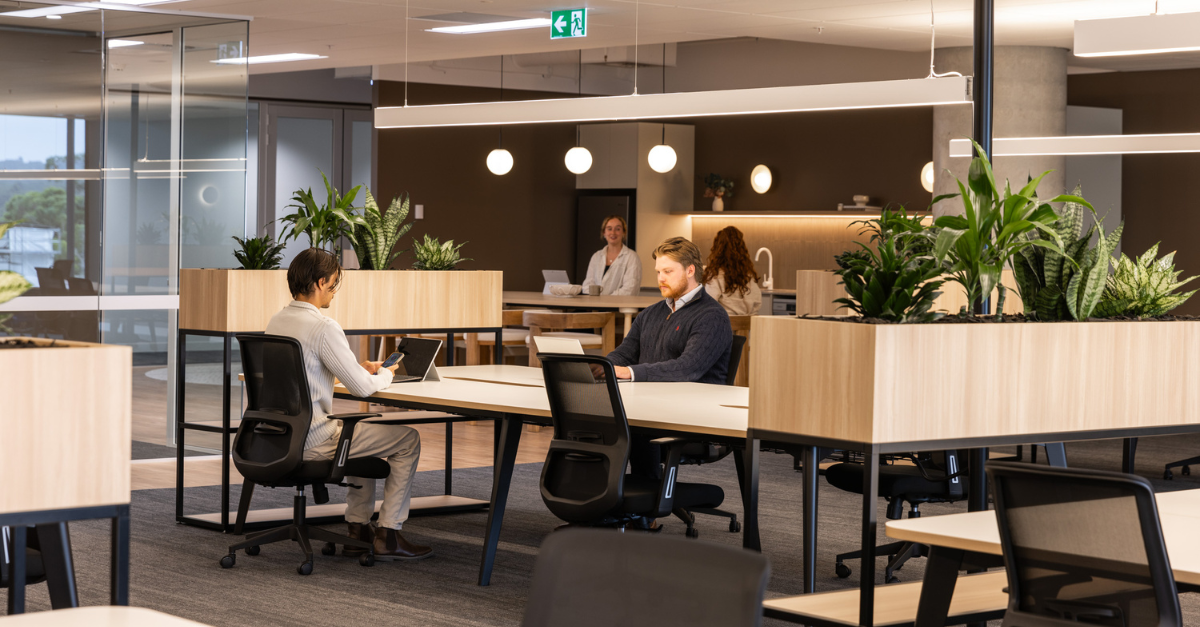Designing for Personality: Why Understanding Workstyles is Key to Workplace Well-being
How the 16 Personalities Framework Can Help Create Healthier, More Productive Work Environments
Why Personality Might Be the Missing Link in Workplace Design
Have you ever considered why some people thrive in open-plan offices, while others require noise-cancelling headphones by 9 a.m.? In what ways can the difference in performance between colleagues be explained by their preferences for flexible, hybrid working arrangements or more traditional, structured environments? The answer to this question may be found in factors that extend beyond job titles or generational differences and could be related to personality.
In today's dynamic workplace, success is not just about possessing the right skills; it is also about alignment. In light of the increasing prevalence of hybrid models, agile environments and activity-based working, it is more crucial than ever to understand how people work best.
Understanding the 16 Personalities Framework
The 16 Personalities framework, rooted in the Myers-Briggs Type Indicator (MBTI), categorises individuals into 16 distinct personality types based on their preferences in how they perceive the world and make decisions. While not a definitive science, it offers valuable insights into how individuals process information, interact with others, and respond to different environments.
By aligning personality types with workplace models and industry requirements, we can create environments that are aesthetically pleasing, functional, and conducive to enhanced productivity, well-being, and long-term performance.
Workstyle Archetypes: Embracing Flexibility and Autonomy in the Modern Workplace
To translate MBTI insights into practical workplace design, we have grouped the 16 personality types into five broader workstyle archetypes: The Analyst, The Collaborator, The Communicator, The Pioneer, and The Sentinel. Each archetype highlights key traits, preferred environments, and workplace models that help individuals thrive. Refer to Table 1 for an overview of how these personas align with MBTI types, workplace models, and relevant industries.
Table 1: Overview of Workstyle Archetypes and Their Workplace Alignment
The Analyst – Deep Thinkers & Problem Solvers
MBTI Types: INTJ, INTP, ISTJ, ISTP Independent and task-focused, Analysts thrive in environments that promote deep concentration and minimal interruption. Ideal for legal, tech, research, and engineering roles, they prefer structured autonomy, quiet spaces, and tools for focused problem-solving. They need:
Quiet zones and private offices
Strategy rooms or R&D labs
Minimal distractions
Control over schedules and workflow
The Collaborator – Empaths & Team Players
MBTI Types: ENFP, INFP, ISFP, ESFJ, INFJ Collaborators are creative, empathetic, and people oriented. They work best in hybrid environments that offer both connection and quiet. Common in education, HR, wellness, and design, they thrive when their environment supports collaboration, emotional safety, and visual inspiration. They need:
Flexible team zones
Calm, inviting atmospheres
Blended solo and group workspaces
Opportunities for meaningful interaction
The Communicator – Visionaries & Relationship Builders
MBTI Types: ENFJ, ENTJ, ENFP, INFP Communicators lead conversations, pitch ideas, and bring people together. They’re energised by strategic vision and social connection. Found in strategy, PR, client services, and leadership roles, they excel in environments that support dynamic dialogue and external engagement. They need:
Tech-enabled meeting and presentation rooms
Hybrid setups for flexibility
Semi-formal collaboration zones
Time for both interaction and reflection
The Pioneer – Agile Innovators & Doers
MBTI Types: ESTP, ENTP, ESFP, ISTP Fast-moving and hands-on, Pioneers are at their best in environments that allow them to pivot, build, and explore. Whether in startups, fieldwork, consulting, or innovation labs, they thrive on momentum and novelty. They need:
Maker spaces or touchdown areas
Lounge zones for spontaneous collaboration
Movement-friendly layouts
Access to different environments throughout the day
The Sentinel – Organisers & Stabilisers
MBTI Types: ISTJ, ISFJ, ESTJ, ESFJ Reliable, structured, and practical, Sentinels thrive in environments with clear expectations and defined roles. Often found in finance, operations, project management, and public service, they prefer predictability and order. They need:
Assigned desks and organized layouts
Logical workflows
Clear processes and scheduling
Dedicated task zones
These archetypes are not fixed—many individuals shift between them depending on the task or phase of work. That’s why agile and inclusive workplace design is essential: it allows everyone to find their rhythm, no matter their personality.
Designing for the Mind: The Workplace as a Human Ecosystem
The most effective workplaces are not just open or closed, collaborative or quiet; they are ecosystems built on an understanding of how people think, feel, and work. When we move beyond surface-level preferences and explore the psychological underpinnings of personality, tools such as the 16 Personalities framework can provide valuable insights that inform effective workplace strategy. By understanding individual motivations, energy levels, communication styles, and focus needs, designers, strategists, and HR teams can craft spaces that not only function but truly support mental well-being, cognitive flow, and long-term performance.
The focus is shifting from designing spaces for specific tasks to creating environments that support the people who use them.
Real-World Application: IBM’s Use of MBTI
IBM's global implementation of MBTI illustrates the efficacy of psychometric tools in fostering shared understanding across diverse teams. In a virtual training programme spanning 20 countries, IBM used the MBTI framework to strengthen communication within its global finance and supply chain teams. The programme was led by Deb Stratas, a certified MBTI facilitator, and comprised virtual workshops that were tailored to different time zones. These workshops included interactive elements to foster engagement. The initiative received a very positive response and was quickly adopted across the company.
It is important to note that workplace strategy encompasses more than just the physical layout; it also involves the way in which people interact and engage with each other within the space. Utilising tools of this nature has been proven to facilitate collaboration and encourage psychological safety, thereby helping to bridge cultural and generational gaps.
Suggestions for Implementation
Start Small – Run a voluntary pilot session with a single team to test engagement and outcomes.
Certified Practitioner – Use a certified MBTI practitioner or a workplace strategist to lead the workshop and interpret results.
Workshop Format – Create a half-day session that includes individual reflection, group exercises, and discussion.
Actionable Takeaways – Summarise what each team member learned and how it applies to day-to-day interactions.
Build Momentum – Encourage attendees to champion the tool internally and request follow-up workshops.
A comprehensive understanding of people is integral to the development of effective workplace strategies. While tools such as MBTI are not without their limitations, they provide a pragmatic starting point for more in-depth conversations about how individuals work, interact and thrive. When implemented thoughtfully, they have the potential to foster more connected, resilient, and high-performing teams.
Designing with Personality in Mind
When we align workspace design with personality insights, we transition from designing for the average to designing for the individual. Each personality type, whether it is the bold creativity of an ENFP, the steady reliability of an ISFJ, or the strategic intensity of an INTJ, brings unique value when supported by the right environment.
In a time when hybrid models, neurodiversity, and employee well-being are of the utmost importance, personality-informed design is not merely a trend; it is a business imperative. By creating spaces that accurately reflect how people think, feel and function, we can enhance productivity and foster a deeper sense of belonging, purpose and performance.
References
16Personalities. Free Personality Test. https://www.16personalities.com/
Psychometrics Canada. IBM Uses MBTI for Team Communication Success. https://www.psychometrics.com/knowledge-centre/case-study/ibm-uses-personality-assessment/
Myers & Briggs Foundation. The 16 MBTI® Personality Types. https://www.myersbriggs.org/my-mbti-personality-type/the-16-mbti-personality-types/. Accessed 26 May 2025.





